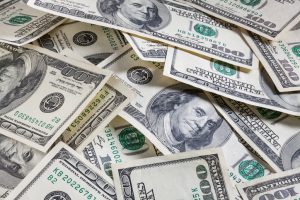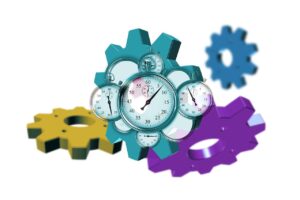New York Biglaw Makes Waaaay More Money Than The Rest Of You
When the legal market struggles, these firms still surge.
 The legal industry may still be slowly crawling its way out of a Great Recession-sized hole, but everything continues to come up roses for New York’s biggest Biglaw badasses.
The legal industry may still be slowly crawling its way out of a Great Recession-sized hole, but everything continues to come up roses for New York’s biggest Biglaw badasses.
Which isn’t really a surprise if you’ve followed the industry for any length of time. When times get rough, bigger fish have the resources to weather the crisis better and nervous customers feel more risk-averse and continue to spend with brands they know rather than substitute to cheaper alternatives.
So we’ve all read that the top firms were getting richer, but Am Law Daily has a new survey that puts some concrete numbers on this windfall:

Trust The Process: How To Build And Manage Workflows In Law Firms
Profits per equity partner, for example, shot up by 18 percent at Cravath, Swaine & Moore; 13.5 percent at Davis Polk & Wardwell; 14 percent at Fried, Frank, Harris, Shriver & Jacobson; 12.8 percent at Milbank, Tweed, Hadley & McCloy; 18 percent at Shearman & Sterling; and 22.6 percent at Weil, Gotshal & Manges.
“It was our best year ever,” said Davis Polk managing partner Thomas Reid, adding that the firm saw “above-normal strength in restructuring, leveraged finance and M&A.”
Also reporting strong partner profits were Paul, Weiss, Rifkind, Wharton & Garrison, up 7.2 percent; Cahill Gordon & Reindel, up 8.2 percent; Cleary Gottlieb Steen & Hamilton, up 7.8 percent; and Kramer Levin Naftalis & Frankel, up 8.5 percent.
Consider what 18 percent means to a partner pulling down a Cravath share. Their partners got a raise the size of what some small-firm partners bring down in a year. This is why nobody was crying for the Biglaw giants that raised associate salaries last year.
It’s not like the market’s any better for these firms, they just have the Veblen Good power to raise their rates in the face of economic uncertainty and watch clients fork over more money:
Some top-line growth for top New York firms was driven by increased regulatory and investigations, private equity, mid-market M&A, bankruptcy and restructuring work, [Citi Private Bank Law Firm Group head of advisory services Gretta] Rusanow said. But there was no uptick in demand. In fact, lawyer demand, as measured by total logged billable hours, was up for New York-based firms by an average of just 0.1 percent, compared with 0.3 percent growth for the industry, Rusanow said.
Instead, revenue growth was driven by stronger rate increases—up to 3.7 percent among New York firms compared with 3.3 in the industry—and less discounting pressure, Rusanow said. “They were able to retain higher rate increases,” she said.
Sponsored

A Law Firm Checklist For Successful Transaction Management


Not All Legal AI Is Created Equal


Trust The Process: How To Build And Manage Workflows In Law Firms

How Savvy Lawyers Build Their Law Firm Rate Sheet
So much for all that sanctimonious posturing about rate increases. But this again cuts to the core of why the fallout from last year’s associate raises will be intriguing to watch. Firms like these knew they could pass the cost along to the client with few questions asked. Others rushed to match without seriously considering whether or not their clients would be as forgiving.
It’s going to take a couple of years, but early indicators suggest a lot of mid-tier firms just helped their top-notch colleagues stretch their lead.
New York’s High-Flying Firms Hit New Heights in Profits, Revenue
Earlier: Top Firms Get Richer In Otherwise Poor Year For The Legal Industry
Biglaw Strikes Back: The Rich Firms Get Richer This Quarter
Sponsored

How Savvy Lawyers Build Their Law Firm Rate Sheet

How To Build And Manage Your Law Firm Rate Sheet
 Joe Patrice is an editor at Above the Law and co-host of Thinking Like A Lawyer. Feel free to email any tips, questions, or comments. Follow him on Twitter if you’re interested in law, politics, and a healthy dose of college sports news.
Joe Patrice is an editor at Above the Law and co-host of Thinking Like A Lawyer. Feel free to email any tips, questions, or comments. Follow him on Twitter if you’re interested in law, politics, and a healthy dose of college sports news.







